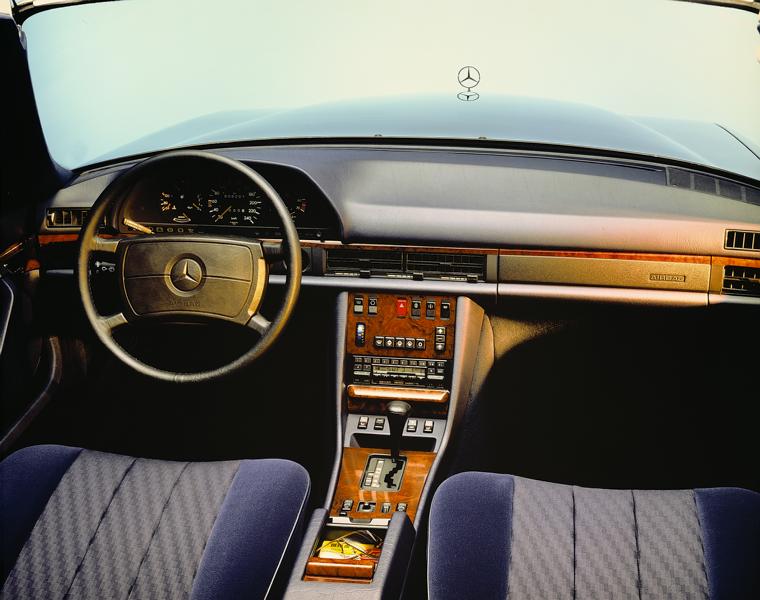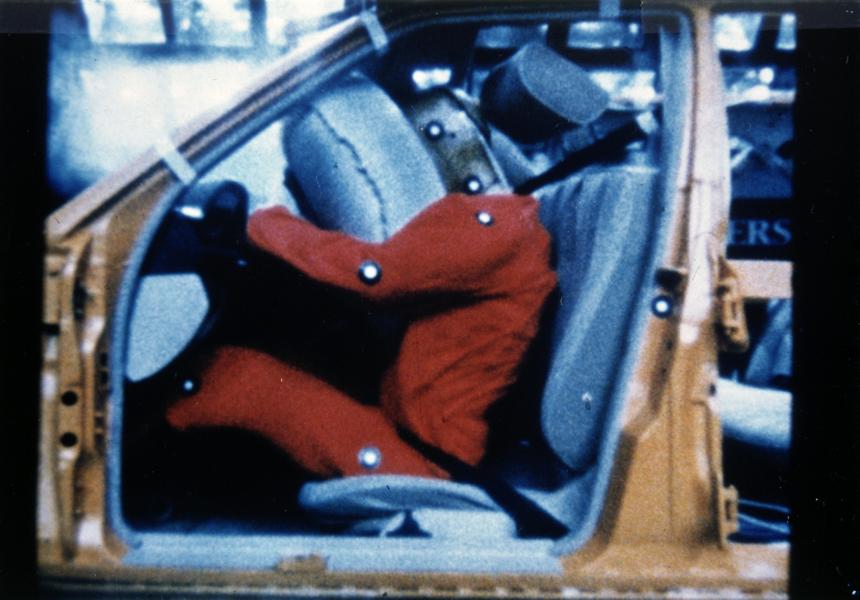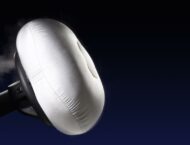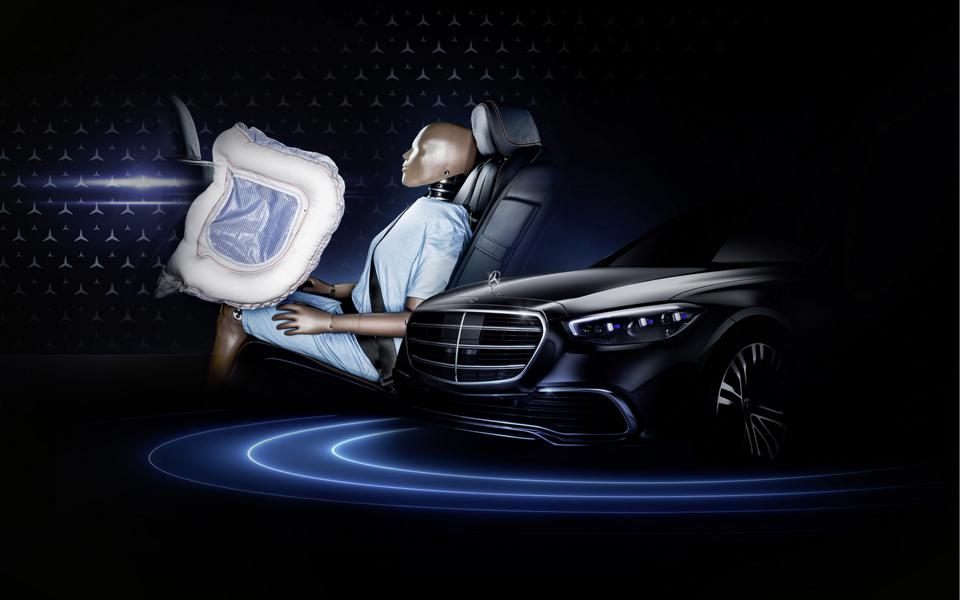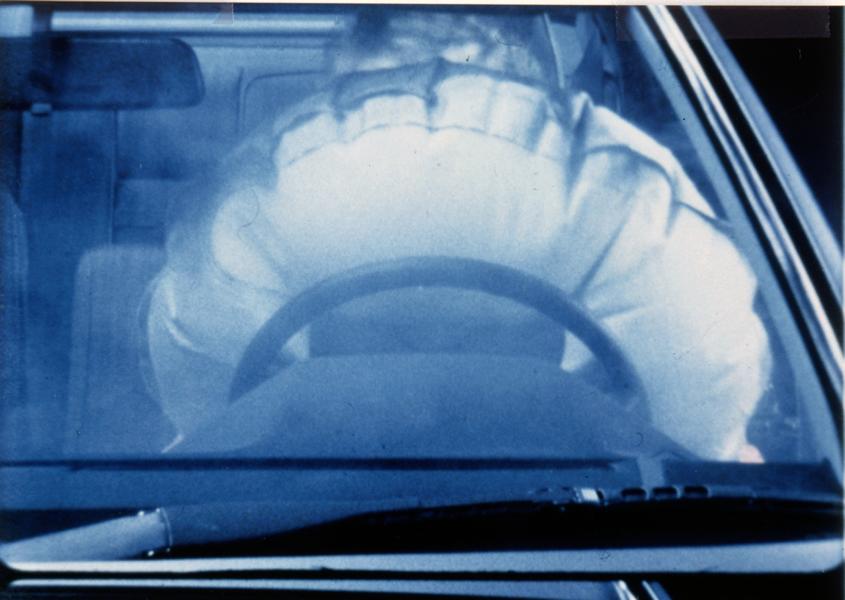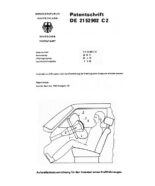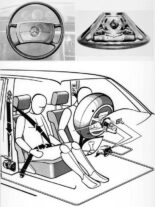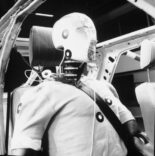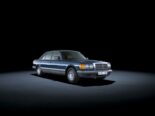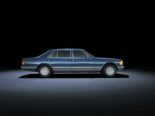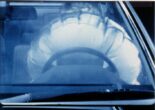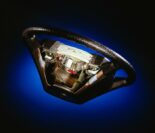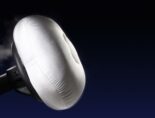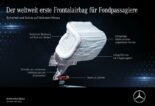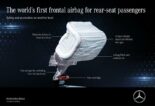The preview took place in December 1980: the driver airbag and seat belt tensioner, originally known as seat belt tensioner, were the latest safety innovations from Mercedes-Benz at the time. As recently as 1980, 40 years ago, the first few sedans in the S-Class (126 series) were delivered with the new technology, thus forming a further milestone in passive vehicle safety in a long series of outstanding innovations by the brand. The airbag was developed jointly by what was then Daimler-Benz AG and Bosch. In January and February 1981, more than 100 S-Class vehicles with the new safety systems rolled off the assembly line. This is how the triumphant advance of a restraint technology begins, which is quickly spreading across the entire world.
World premiere from February 5 to 15, 1981
The public world premiere will take place from February 5 to 15, 1981 at the Amsterdam International Motor Show. Just one month later, Mercedes-Benz also presented the driver airbag and seat belt tensioner at the Geneva Motor Show. The combination of the two systems is initially only available for the S-Class and the SEC Coupés and costs 1.525,50 DM as an option.
Airbag / belt tensioner available as an option
Effective initial spark: Airbags and belt tensioners were available as special equipment for all Mercedes-Benz passenger cars as early as 1982. The driver airbag will be standard equipment in all models of the brand by 1992. In 1994, the passenger airbag was added as a standard safety feature. The following years brought numerous more airbags, and these protective impact pads in various vehicle positions have long been an integral part of the integral safety concept at Mercedes-Benz.
Mitigate impact: The protective airbag unfolds in front of the occupant within a few milliseconds. Sensors recognize particularly strong delays, such as those that occur in a severe frontal collision, and trigger the ignition of a propellant charge. The resulting gas mixture, at that time mainly nitrogen, inflates a textile cover - the airbag. It offers the best possible protection in combination with the seat belt, both together dampen the movement of the hasty upper body.
Parallel development: Four decades ago, Mercedes-Benz also came up with an innovation for the seat belt. The brand introduced the driver airbag at the end of 1980 together with the restraint system for the front passenger, initially known as the “seat belt tensioner”. But as early as 1984, the belt tensioner, as this safety feature is now called, was standard equipment for the front seats of all Mercedes-Benz passenger cars. The seat belt tensioner reacts to the same sensor signal as the driver's airbag, which also triggers controlled pyrotechnics: Here, too, a propellant charge ensures that the automatic three-point seat belt is tightened within a few milliseconds. In many cases, the belt, which is loosely positioned in front of the upper body, is pulled taut, and the driver and front passenger are held closer to the seat surfaces.
Innovation chain: The development continued in the following years: in 1995 the seat belt tensioners were combined with belt force limiters. In 2002, the engineers added an electronic version to the pyrotechnic seat belt tensioner with the introduction of the preventive occupant protection system PRE-SAFE®. This is reversible in contrast to the pyrotechnically triggered belt tensioner: If there is no impending collision, the belt loosens again.
The invention: The basic idea of the airbag goes back to the inventor Walter Lindner. In the 1950s, however, the latter spoke of an “inflatable container in a folded state that inflates automatically in the event of danger”. The Munich resident registered his “facility for protecting people in vehicles against injuries in collisions” with the German Patent Office on October 6, 1951. Lindner already describes the principle of an airbag very precisely. There is only a lack of implementation. The technical prerequisites for the sensor technology are missing as well as those for a fast gas generation. Ordinary compressed air is not suitable for generating pressure because it takes too long to inflate the airbag. The elastic and therefore very tear-resistant material for the airbag was also not available at that time. That only changes over the years. Mercedes-Benz took up the airbag idea in 1966 and in 1967 undertook the first attempts at effective gas generation. In October 21 the then Daimler-Benz AG registered the corresponding patent for the “impact protection device for the occupants of a motor vehicle” (patent specification: DE 52 902 2 C1971).
Constant progress: After around 250 accident attempts, more than 2.500 tests with the impact sled and thousands of tests with individual components, the safety engineers at Mercedes-Benz will bring the technology to series production readiness over the next fifteen years. “SRS Airbag” - this is what you can read on the steering wheels of the appropriately equipped Mercedes-Benz models. The abbreviation stands for "Supplemental Restraint System", translated as "additional restraint system". Because it complements the seat belt as the primary restraint system. The impact pots on these steering wheels are impressive because they still contain a large fabric cover: the first driver airbags have a volume of 60 to 70 liters when inflated. The development of the front passenger airbag is analogous. When it was presented at the International Motor Show in Frankfurt / Main in 1987, it still took up the entire glove compartment.
Statistics: It is very difficult to calculate the positive effect of individual systems and measures on accident occurrences. But figures from the German Federal Statistical Office speak such a clear language: In 1980, 15.050 people died in all German road traffic (Federal Republic and GDR), 6.915 of them were car occupants. For the year 2000 the corresponding comparative figures are 7.503 and 4.396 people. Again almost twenty years later: In 2019 there were 3.046 road deaths in Germany, 1.346 of which were accidents in a car. Since the number of vehicles on the roads is increasing at the same time, these numbers appear particularly impressive in comparison to the number of traffic fatalities, extrapolated to 10.000 vehicles each. This value was 1980 in 4,5, 2000 in 1,4 and decreased to 2019 in 0,5.
Lower volume, higher security: Without compromising on safety, the components of the airbag get smaller and smaller over the years. This is also a crucial requirement in order to accommodate the airbag in other places than in the steering wheel or glove compartment. The developers are pursuing this goal because the head-on collision, mitigated by the first airbags, is only one of numerous accident scenarios. In 1995 the side airbag was introduced into the E-Class of the 210 series, the windowbag added to the comprehensive protection system from 1998, followed by the head-thorax side airbag in 2001, the kneebag in 2009 and the thorax-pelvis sidebag, the cushionbag and the in 2013 especially small beltbag, an inflatable belt strap. The gas generators of so-called adaptive airbags ignite in the S-Class of the 2005 series, which was introduced in 221, in two stages, depending on the severity of the accident. The S-Class of the 2020 series presented in 223 will receive additional airbags. For example, the rear airbags are celebrating their world premiere. 40 years after the introduction of the driver airbag, they are using a completely new filling concept with a tubular structure in order to be able to offer frontal airbags for the two outer rear seats for the first time. In the event of a serious frontal collision, they can significantly reduce the stress levels on the head and neck of the passengers who are buckled up.
Of course that had not happened yet!
tuningblog has countless other articles on the subject of car and auto tuning in stock. Do you want to see them all? Just click HERE and look around. In part, we would like to provide you with news but also off the tuning. In our category Tips, products, information & Co We have reviews of car or accessories manufacturers, new ones Tuning Wiki Terms or one or the other Leak veröffentlicht. Following an excerpt of the last articles:
|
BMW SIM Live 2020: BMW Motorsport SIM Racing selects the best! |
Driver airbag and belt tensioner from Mercedes!
"Tuningblog.eu" - we keep you up to date on the subject of car tuning and car styling with our tuning magazine and we present you the latest tuned vehicles from all over the world every day. It's best to subscribe to ours Feed and will automatically be informed as soon as there is something new about this post, and of course also to all other contributions.
 tuningblog.eu Your magazine about tuning the car
tuningblog.eu Your magazine about tuning the car

